Qi and Blood Deficiency
The information provided here is not a replacement for a doctor. You shouldn't use it for the purpose of self-diagnosing or self-medicating but rather so you can have a more informed discussion with a professional TCM practitioner.
At a glance
Preliminary reading: What is a pattern? The concept of Q The concept of Blood The concept of Deficiency
Key attributes
Chinese name: 气血亏虚,气血两虚,气血不足 Pinyin name: Qì Xuè Kuī Xū, Qì Xuè Liǎng Xū, Qì Xuè Bù Zú
Pattern nature: Empty combined pattern
Pattern(s) it combines from: Qi Deficiency Blood Deficiency
Causes
Common causes: 1. Mental over-work, 2. Chronic diseases
Diagnosis
Common symptoms: Fatigue Insomnia Pale face Dizziness Weak voice and eight other symptoms
Pulse type(s): Slowed-down (Huan), Weak (Ruo), Fine (Xi)
Tongue description: Pale tongue with thin white coating
Treatment
Treatment principle: Tonify both Blood and Qi, invigorate Blood and Qi circulation, tonify the Spleen.
Common formulas: Gui Pi Tang Ba Zhen Tang Guo Qi Yin and one other formulas
Pathology
The Qi and Blood are from the some origin and these two elements are transformable between each other. The Qi creates the Blood, and vice versa the Blood supplies Qi. Therefore it is quite common both patterns appear at the same time.
When general Qi is Deficient, the patients lack the energy to speak, to move, to eat or to do any exercises. The weakened Qi also makes it hard to defense the body against any external Pernicious Influences or the six Evils.
As for Blood Deficiency, the patients don't have enough Blood to nourish the brain (hence the dizziness and poor memory), the limbs (thus the numbness in arms and legs), the skin, nails and hair (thus the dryness there) and the eye (hence the blurred vision). The patients also surfer from insomnia, dream disturbed sleeps, slight anxiety and depression.
For women, Qi and Blood Deficiency can also give rise to scanty periods, late periods or even complete absence of periods.
Causes
Mental over-work: Working long hours, often in a confined space, with unreasonable deadlines under conditions of stress can largely consume both Qi and Blood. Furthermore, this often results in skipped, late or irregular meals which further contributes to Qi and Yin Deficiency.
Chronic diseases: Long term sickness consumes both general Qi and Blood.
Diagnosing Qi and Blood Deficiency
Diagnosing a pattern in Chinese Medicine is no easy feat and should be left to professional practitioners. In particular one has to know how to differentiate between different types of pulses and tongue coatings, shapes and colors as well as learn to read from a long list of seemingly unrelated symptoms.
Pulse type(s): Slowed-down (Huan), weak (Ruo) or fine (Xi)
Tongue description: Pale tongue with thin white coating
Main symptoms: Fatigue Insomnia Pale face Dizziness Weak voice Poor memory Palpitations Poor appetite General weakness Aversion to speak Shortness of breath Numbness in the skin Numbness in the limbs
Diagnosis commentary: Tey characteristic symptoms of this pattern are the general weakness and fatigue, aversion to speak, short of breath as well as pale face and lips.
Treating Qi and Blood Deficiency
Treatment principle
Tonify both Blood and Qi, invigorate Blood and Qi circulation, tonify the Spleen.
Herbal formulas used to treat Qi and Blood Deficiency
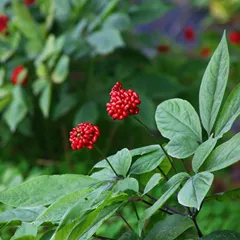
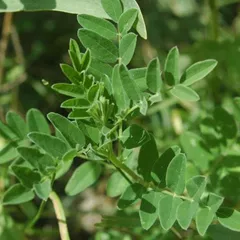
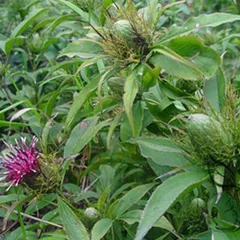
The top herbs in Gui Pi Tang are Ginseng (Ren Shen), Milkvetch Roots (Huang Qi) and Atractylodes Rhizomes (Bai Zhu)
Gui Pi Tang
Source date: 1529 AD
Number of ingredients: 12 herbs
Key actions: Tonifies and nourish Qi and Blood. Tonifies Heart and Spleen.
Formula summary
Gui Pi Tang is a 12-ingredient Chinese Medicine formula. Invented in 1529 AD, it belongs to the category of formulas that tonify Qi and Blood.
Besides Qi and Blood Deficiency, Gui Pi Tang is also used to treat Qi Deficiency or Blood Deficiency.

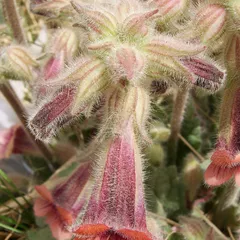

The top herbs in Ba Zhen Tang are Ginseng (Ren Shen), Prepared Rehmannia (Shu Di huang) and Atractylodes Rhizomes (Bai Zhu)
Ba Zhen Tang
Source date: 1326 AD
Number of ingredients: 10 herbs
Key actions: Tonifies and augments Qi. Tonifies and augments Blood.
Formula summary
Ba Zhen Tang is a 10-ingredient Chinese Medicine formula. Invented in 1326 AD, it belongs to the category of formulas that tonify Qi and Blood.
Besides Qi and Blood Deficiency, Ba Zhen Tang is also used to treat Lung Qi Deficiency or Spleen Qi Deficiency.
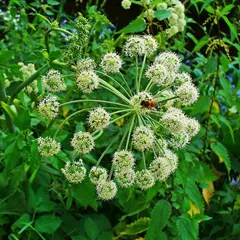

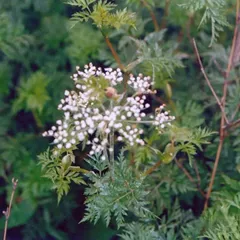
The top herbs in Guo Qi Yin are Dong Quai (Dang Gui), Prepared Rehmannia (Shu Di huang) and Szechuan Lovage Roots (Chuan Xiong)
Guo Qi Yin
Source date: 1602 AD
Number of ingredients: 11 herbs
Key actions: Warms the menses. Dispels blood Stagnation. Nourishes the blood .
Formula summary
Guo Qi Yin is a 11-ingredient Chinese Medicine formula. Invented in 1602 AD, it belongs to the category of formulas that tonify Blood.
Besides Qi and Blood Deficiency, Guo Qi Yin is also used to treat Qi And Blood Stagnation.
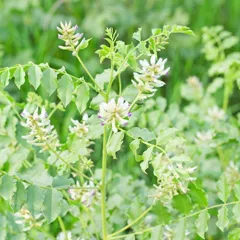


The top herbs in Zhi Gan Cao Tang are Liquorice (Gan Cao), Unprepared Rehmannia (Di Huang) and Ginseng (Ren Shen)
Zhi Gan Cao Tang
Source date: 220 AD
Number of ingredients: 10 herbs
Key actions: Augments the Qi. Nourishes Yin. Nourishes the Blood. Restores the pulse.
Formula summary
Zhi Gan Cao Tang is a 10-ingredient Chinese Medicine formula. Invented in 220 AD, it belongs to the category of formulas that tonify Qi and Blood.
Besides Qi and Blood Deficiency, Zhi Gan Cao Tang is also used to treat Lung Qi Deficiency.
Diet recommendations
Balance diets and try these foods that rich in nutrition but also easy to digest such as rise, meat, fish, shrimps. Avoid cold, raw, spicy or greasy foods.
Try an diet that is good in Blood generation, such as red meat, spinach or animal livers.
Related conditions
Please keep in mind that a Western Medicine condition can be caused by several Chinese Medicine patterns of disharmony and vice versa. As such a patient suffering from one of the conditions below will not necessarily be suffering from Qi and Blood Deficiency, it is just one pattern that's commonly associated with the condition. Click on a condition to learn what other patterns it's associated with.
Absence of menstruation Menstrual cramps Low breast milk supply Anemia Hepatitis Nervous exhaustion Habitual miscarriage Ulcers
Special highlight: the link between low breast milk supply and Qi and Blood Deficiency

Prepared Rehmannia (Shu Di huang) is the key herb for Si Wu Tang, a formula used for low breast milk supply caused by Qi and Blood Deficiency
Typical symptoms for low breast milk supply caused by Qi and Blood Deficiency: Fatigue Dry skin Pale face Pale lips Hair loss Watery milk Poor appetite Spontaneous flow of breast milk No feeling of distension of the breasts Insufficient or absent lactation after childbirth
Recommended herbal formulas: Milk Boost Tea, Si Wu Tang, Tong Ru Dan
Traditional Chinese Herbalism believes that a lack of milk or a low quality milk supply is often due to low level of Qi and Blood. It's normal, a nursing mother needs much more Qi and Blood than usual and her supplies have been depleted during the act of birth-giving. Qi and Blood are the main ingredients of all Body Fluids, which include breast milk. Therefore, Qi and Blood Deficiency will naturally lead to very little or no breast milk after delivering the baby.
When breast ducts are empty...Read more about low breast milk supply
Special highlight: the link between menstrual cramps and Qi and Blood Deficiency
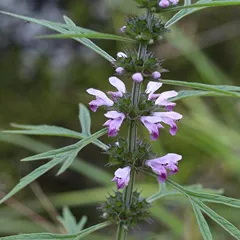
Motherwort Herbs (Yi Mu Cao) is the key herb for Ba Zhen Yi Mu Tang, a formula used for menstrual cramps caused by Qi and Blood Deficiency
Typical symptoms for menstrual cramps caused by Qi and Blood Deficiency: Edema Pale face Pale lips Tiredness Dizziness Sore back Sore knees Loose stools Scanty periods Pale color periods Shortness of breath Dull menstrual cramps Feeling of bearing down Thin and watery periods Pain relieved with massage
Recommended herbal formulas: Ba Zhen Yi Mu Tang, Sheng Yu Tang
Qi and Blood Deficiency often only causes dull menstrual cramps. Even in painful periods caused by a Deficiency there is often also an element of Stagnation because Qi can not move Blood properly, which is what leads to dysmenorrhea. It often come along with a dragging feeling around the perineum that can be relieved by massage. There are no clots in the menstrual blood, but the blood is scanty and thin with a pale color.
The cramps often happen towards the end of or after the period. It is...Read more about menstrual cramps
